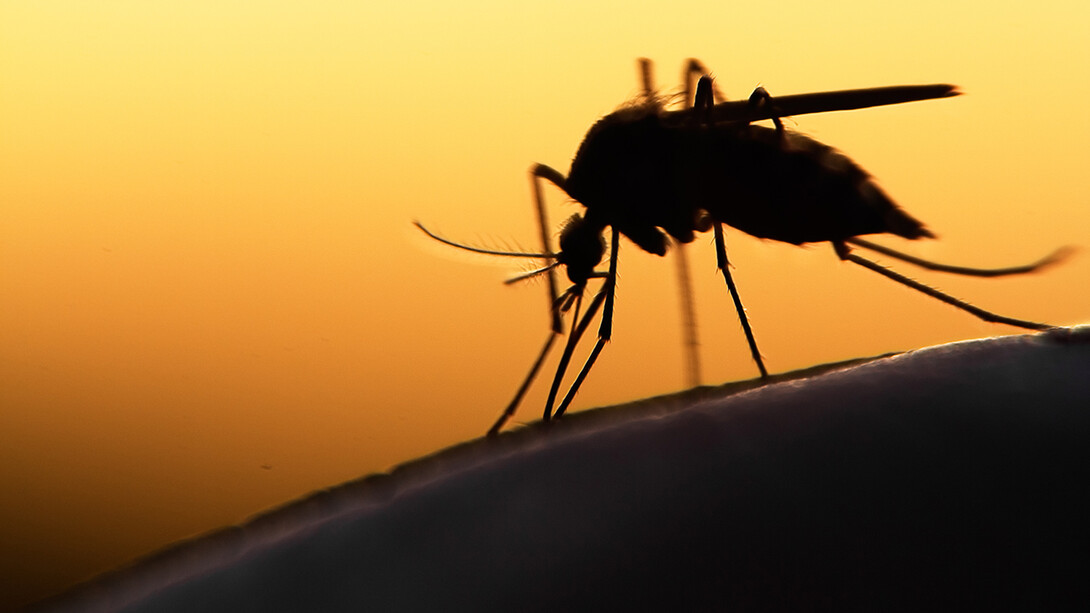
Husker entomologist Troy Anderson is heading up a new research project that will explore ways to reduce the incidence of malaria.
The Bill and Melinda Gates Foundation awarded University of Nebraska–Lincoln a three-year, $1.43 million grant to support the development of a more effective mosquito bait station.

Bait stations look simple but are a major tool in mosquito mitigation. In many cases, they’re rectangular devices about the size and shape of a piece of printer paper, with a thin membrane containing a combination of odorant and sugar for insect attraction plus a toxicant lethal to the insect. Mosquito bait stations can be placed on the outside wall of a home or on poles.
To develop a next-generation bait station prototype, Anderson and his colleagues will test variations in membrane composition, station design and attraction elements to determine the most effective combination. Reduced insecticide efficacy has “increased the need to develop technologies to reduce and eliminate mosquito-borne pathogen transmission,” Anderson, an expert in insect toxicology, said. “This work focuses on the development and introduction of an insecticide delivery technology to insecticide-resistant mosquito populations for the purposes of preventing community transmission of malaria.”
Researchers will follow up by conducting field tests of prototype stations in Nebraska, Florida and Costa Rica.
Stronger mosquito mitigation technology is needed because recent years have reversed positive trends for malaria prevention achieved earlier this century.
Between 2000 and 2015, the World Health Organization reported, many nations achieved a significant decline in the global incidence of this debilitating and often fatal disease. But in recent years, key global indicators such as total deaths, total cases and the number of cases per 1,000 people have worsened, according to WHO’s “Global Technical Strategy for Malaria 2016-2030.”
Malaria cases in 2020 totaled an estimated 241 million, primarily in sub-Saharan Africa, up from 227 million in 2019. Deaths from malaria totaled an estimated 627,000 adults and children in 2020, according to WHO figures. That was a 12% increase from the year before. The COVID-19 crisis disrupted efforts at mosquito mitigation in some countries, as did humanitarian emergencies.
Malaria each year strikes more than 25 million pregnant women, raising multiple health concerns for the mother and her child. One of malaria’s most harmful effects is that the disease greatly increases the chances of low birthweight for newborns. In 2020, WHO reports, malaria infections resulted in low birthweight conditions for 819,000 newborns.
As part of the effort to protect vulnerable populations, the majority of pregnant women and young children in sub-Saharan Africa now sleep each night under insecticide-treated mosquito nets. But a growing number of countries report increased mosquito resistance to conventional insecticides used against them.
To achieve renewed progress on this global public health need, new tools are needed to combat malaria, with increased investment in research and development a key part of that effort, WHO Director General Tedros Adhanom Ghebreyesus wrote in his organization’s “Global Technical Strategy for Malaria 2016-2030.”
Anderson’s project to develop an effective attractive toxic sugar bait station aims to provide one of the new tools in that fight.
“We will consider this work successful if we can achieve a 70% or greater reduction in community mosquito populations and sustain this reduction of mosquito numbers for several months,” Anderson said.
The next-generation bait station being developed by Anderson and his colleagues “does have applications for reducing mosquitoes in other communities, such as in Nebraska,” Anderson said. “It would target not only nuisance mosquitoes, but also those that carry West Nile virus.”
Since early in his academic career, Anderson said, “I’ve been interested in the discovery and development of chemical interventions that reduce pathogen-transmitting arthropods and community transmission of disease. This work has been a broad interest of mine since I was a student.”
With adequate investments, strong political commitment and the proper mix of strategies, the world can make major strides in combatting the malaria threat, WHO Director General Ghebreyesus has written. Anderson’s cutting-edge research has the potential to provide a key asset in that global campaign.







